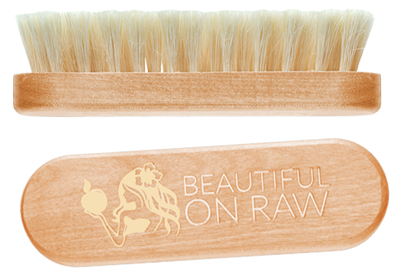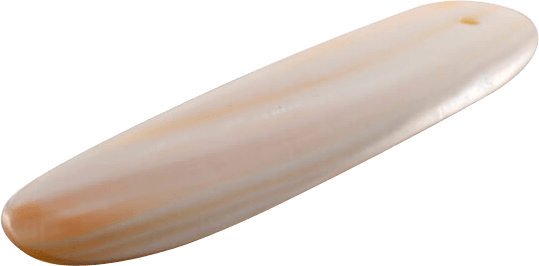Exfoliation...The Best Kept Secret for Beautiful Skin

As the serpent’s ability to shed its skin makes it a symbol of rejuvenation across the world, so exfoliation is your ticket to supple, radiant, blemish-free skin.
History of Exfoliation
The wonders of exfoliation have been known by various cultures throughout history. Most civilizations that practice exfoliation seem to be centered either in temperate climates or on the edge of the Artic Circle. Agricultural tribes of Amerindians practiced exfoliation using corncobs while nomadic tribes like the Comanche employed sand from river bottoms to scrub their skin. Polynesians would scrape their skin with seashells for their form of exfoliation. Then there’s the traditional Scandinavian method where people first stand barefoot in the snow while vigorously scrubbing their bodies with cedar branches before running into the hot sauna.
Nature provides its own version of exfoliation. Animals shed their coats and trees discard their leaves annually. The serpent is sacred in many cultures as a symbol of longevity and eternal youth precisely because it regularly crawls away from the skin it has shed, allowing it to regenerate.
How Exfoliation Works
Estheticians, cosmetologists and dermatologists all know that the outer skin layer needs to be damaged to begin renewal. They refer to this process as “controlled skin damage.” Exfoliation initiates the natural skin repair and renewal of cells. Remember that exfoliation is mild damage which removes dead cells, coaxing the skin to produce higher levels of collagen and elastin and encourage a faster renewal process, which usually takes about 28 days, but does gradually require a longer time as we get older.
Benefits of Exfoliation
Exfoliation can work wonders for your skin improving not only the way it looks but also the way it feels. You may start noticing results from the very first time you try it and will enjoy marked benefits with regular practice.
Exfoliation fights the signs of aging, shedding the layers of dead skin that often magnify fine lines and wrinkles, making them stand out and making us look older. If you regularly shed that dead skin, you will be evening out your skin tone. Uneven skin tone is one of the primary appearance-related concerns for many women, but it is something that we can stop through simple exfoliation.
Exfoliation can also help you if you suffer from blackheads, whiteheads or breakouts, for it will unclog your pores, ridding them of the oil that builds up underneath, and keeping your skin clean and smooth. If you suffer from acne, then exfoliation can be a great way to keep it under control.
You spend money on quality skincare products only to discover that your skin isn’t benefiting from them. What’s going on? Well if you have layers of dead skin piled up, the product might not be able to penetrate it and is not to blame. Exfoliate regularly so that your skincare products get a chance to really sink in and work their magic.
Types of Exfoliation
Depending on the intensity, exfoliation can range from mild exfoliation, epidermal exfoliation and the deep dermis type. I believe whatever methods you use it must produce only superficial injury, confined to the epidermis, so I don’t recommend deep dermis type exfoliation.
Cleansers, exfoliating scrubs and masques provide mild exfoliation. If you are a novice to exfoliation these methods must be introduced gradually and remain part of your beauty routine forever.
Mild exfoliation is good, but after a few weeks of regular practice, I suggest you move to more vigorous methods, those that will not only exfoliate, but also stimulate the underlying tissues of your face and neck.
Methods of Exfoliation
The means by which exfoliation can be achieved can be chemical or manual. My passion in finding different tools for exfoliation is partly driven by my commitment to stay away from chemical peels. My only connection to alpha hydroxyl acids is fresh fruit masques! For more information take a look at my Blog article: Chemical Peels: Why Would You Want One.
So if we aren’t going to be going for chemical methods of exfoliation, we need to look at manual ones. With manual exfoliation, you are fully in control and don’t have to worry about any strange substances entering your body. Another benefit: you can exfoliate every day.
I have found that dry brushing is one of the best and most convenient methods of exfoliating your face. I offer an inexpensive yet effective Facial Brush for Glowing Complexion on my site that you can use for dry brushing. Another option to consider is the Facial Strigil, which is a specialized tool with smooth edges for applying gentle friction to the skin. Besides exfoliation, using the Facial Strigil will also increase blood circulation and clear metabolic wastes that may be congesting surface tissues and muscle fibers.
How Often I Should Exfoliate?
As often as your skin permits. Ideally every day.
What if My Skin is Sensitive?
The good news is that if you eat raw foods, your skin will become less sensitive and you can exfoliate even more vigorously. Facial dry-brushing is the best answer yet for dry skin. Many have found that the dryness which plagued them all their lives disappeared after they began regular facial brushing.
Mechanical exfoliation, whether with the facial brush or the facial strigil, provides cumulative results, so the more you use them, the more vibrant your skin will appear, and soon will give off the glow that you’ve been seeking!


